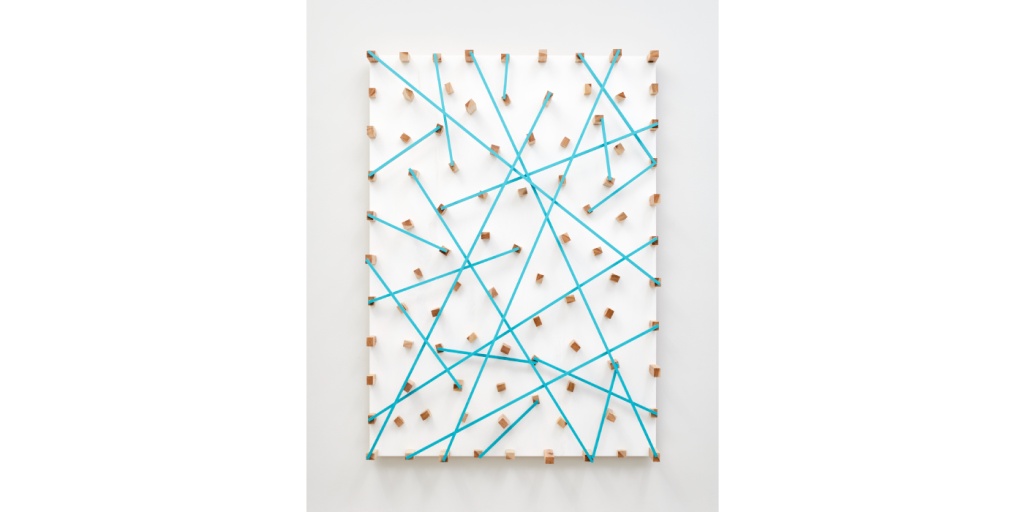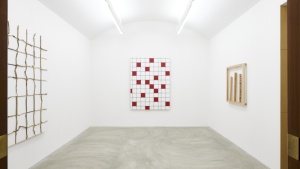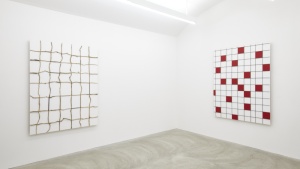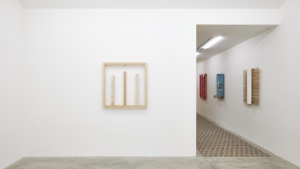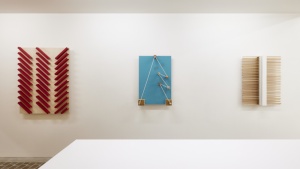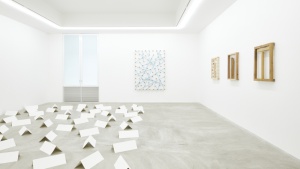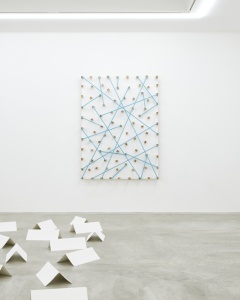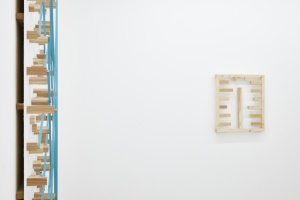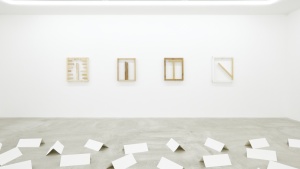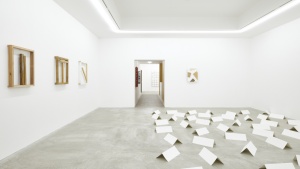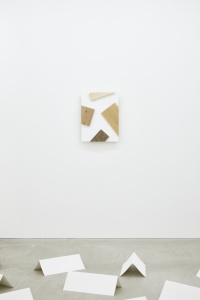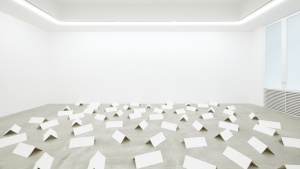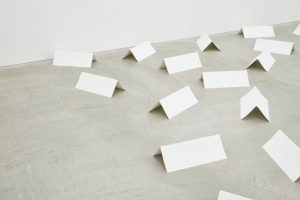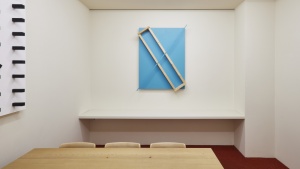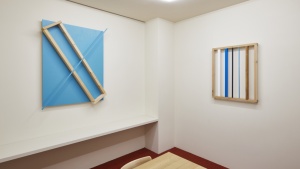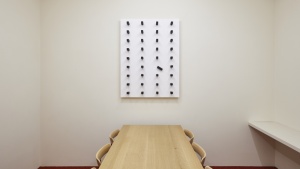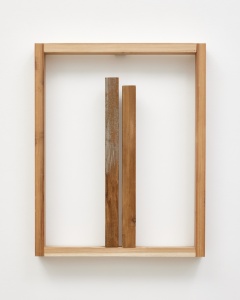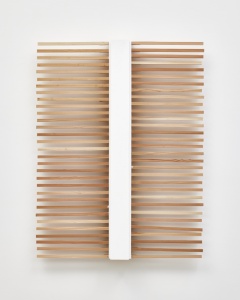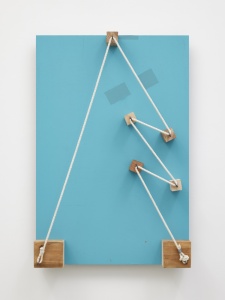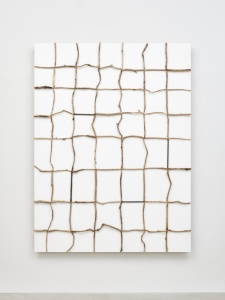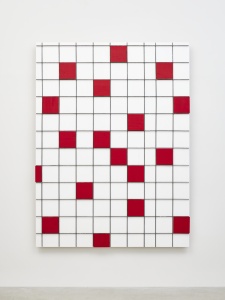【Publications: “Kishio Suga: Notes 1967-2008” and Exhibition Catalogue】
We are pleased to announce the publication of “Kishio Suga: Notes 1967-2008” which contains pages selected by the artist from the twenty notebooks he had written between 1967 and 2008. A total of 704 pages are inscribed with the origin of Kishio Suga’s creation, the artist who continues to confront and question the logic of this world. The publication will be available for purchase from June 24, the opening of the exhibition “Neither Things nor Sites”.
https://oil.bijutsutecho.com/artbooks/220/1100025033
We will also publish a fully illustrated catalogue which accompanies the exhibition, with a text by Naoko Seki (Professor, School of Culture, Media and Society, Waseda University). The catalogue will be released on July 22.
Tomio Koyama Gallery is pleased to present, “Neither Things, nor Sites,” a solo exhibition of works by Kishio Suga.
This marks the artist’s eleventh solo exhibition with the gallery. Especially since 2017, he has vigorously held solo shows every year, thus constantly engaged in the production of new works. This year’s exhibition consists entirely of new works, including an installation and a selection of three-dimensional works displayed on the wall.
【Online Viewing】
Matterport by wonderstock_photo
Kishio Suga (1944-) is a central member of the Mono-ha art movement that took place from the late 1960s to the 1970s. For over 50 years since, he has remained active at the forefront, opening up unique horizons in contemporary art through the essential world of his work expressed by means of the diverse existence of things.
In addition, his perspective of fundamentally reconsidering the way we observe “things” in resonance with the Indian Madhyamaka Philosophy of the “doctrine of the void,” continues to instil his works with a sense of universality, and his passion for further deepening and creating art is as yet unabated.
Suga has already established an international reputation as one of the leading artists of Postwar Japanese art, and has participated in more than 400 exhibitions in Japan and abroad. His works are also housed in over forty museums throughout the world including the Centre Pompidou, the Tate Modern, The Museum of Modern Art, New York, M+, The National Museum of Modern Art, Tokyo, and the Museum of Contemporary Art, Tokyo.
(Please see here for further information on the artist and list of his major exhibitions: http://tomiokoyamagallery.com/en/artists/kishio-suga/)
【About the exhibition “Neither Things, nor Sites,” and the new works: An endless world where things and the whole, and things and things are connected】
Suga has written the following statement in correspondence to the exhibition:
****************
“Neither Things, nor Sites”
For a “thing” to exist, means that its very substance is perceived. If the “work” is a “thing,” what usually follows is the question of “the nature of that thing.” When in a situation where one is actually looking at that “thing,” one could easily describe it as “something like this.” However, the fact that the “work” is right in front of one’s eyes, and that it does not differ in any way from its description, makes it unclear as to the extent of the circumstances pertaining to that “thing.” Should that be the case, then things are inherently capable of being in such circumstances. A work of art is originally a “thing” and is not something that can be explained. Each person who views it perceives it in their own way and acknowledges the presence of its “existence.” That being said, such circumstances seem to be predicated on the assumption that we do not doubt the world of “things.” The existence of “things” is grounded upon the presence of a world and circumstances that bear connections to them. The world of “things” as a whole reminds us of connections. Without these connections, it is indeed difficult to see the world of “things.”
Kishio Suga
****************
In producing his work, Suga collects and selects “things” such as wood, stone, metal, and rope, and by approaching the relationships between “things” and “things,” “things” and space, “things” and people in various subtle ways, draws out and reveals the very depths of the diverse existence of “things.”
”I believed the world existed as an unbroken continuity wherein the distinction between individual ‘mono’ revealed themselves. I could not, therefore, tolerate conceptualization that gave priority to thinking and removed individuality and reality.”
(Kishio Suga, “Latent Infinity” KISHIO SUGA, exhibition catalogue, Museum of Contemporary Art Tokyo, 2015)
Since the beginning of his artistic practice, Suga has always been aware of the fact that the existence of “things” which are individually dispersed throughout the world, indeed connect with to one another to create a cohesive whole. Observing stones and trees in their natural habitats of forests, groves, and rivers since his childhood, led him to realize that nature, things, and people are all equal and connected. Suga states, “Everything is indivisible. All things have their own place by existing.” This sensitivity is reflected in his work.
In his new work, “Passage Among Edges and Pillars,” many small pieces of wood are dotted across a white board. Long, thin, blue strips of timber serve to connect two pieces of wood together. By selecting various two points, the strips of timber that pass between them intersect diagonally in a complex manner, giving rise to a peculiar site that is at once unstable yet also extremely beautiful.
For the new installation, countless squares of white paper folded in two are placed all over the floor in the room at the back of the gallery. Each piece of paper takes up space, and the slight displacement of their position and the different ways in which they are folded affect one another, enabling them to exist as if radiating with an invisible and infinite rhythm and energy. In this manner, ordinary pieces of paper that we are all familiar with, give rise to a situation that we have never seen before.
Akira Tatehata, President of Tama Art University, referred to Suga’s work as “a harmony that is perceived through its relationship with what is not seen there.”
“There is no end because one thing is always related to another in an infinite series of interdependent relationships (where do I end and you begin?), and because we are always to this extent ourselves part of the work, because we exist in the world.”
(Simon Groom, “Framing Suga” KISHIO SUGA, exhibition catalogue, Museum of Contemporary Art Tokyo, 2015)
While the world is vast and endless, we are unable to perceive it without recognizing the invisible connections within it. Suga introduces a new sense of awareness to our narrowed perceptions, and suggest how we can engage with the world in a more enriching way through art. We welcome viewers to embrace this opportunity to engage with Suga’s latest artistic endeavours.
—————————————————————————————–
For press inquiries, please contact: press@tomiokoyamagallery.com (Makiko Okado)
—————————————————————————————–

